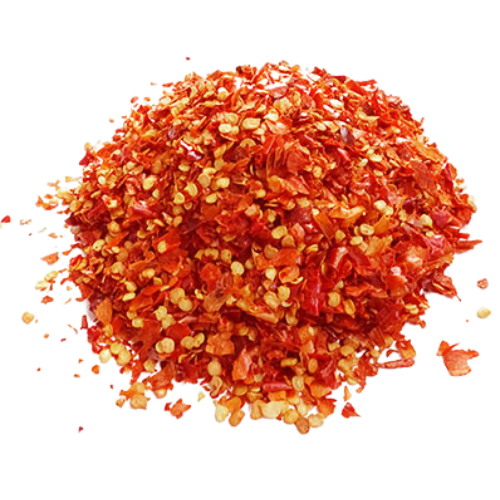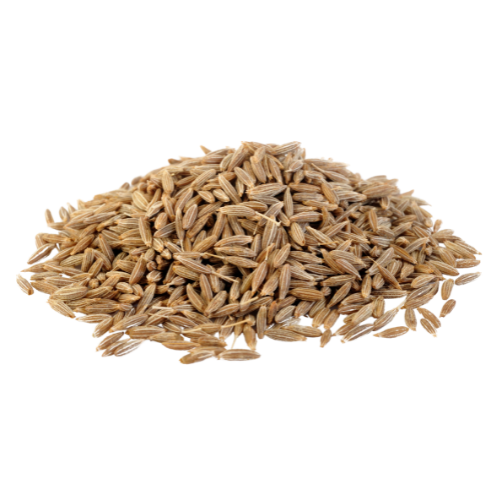Have you ever wondered why shakers of chilli flakes are commonly found in pizzerias and restaurants serving Italian cuisine, but not in others? Are chilli flakes exclusively used in Italian dishes? What other regions of the world use them and for what types of food? In Meghalaya, home to some of the spiciest and most flavorful chillies like Bhut Jolokia and Bird’s Eye chilli, anything related to chilli piques our interest. That’s why Zizira plans to launch a range of chilli flakes. It’s no surprise that we set out to explore the story behind chilli flakes.
What Are Chilli Flakes and How Are They Different from Chilli Powder?
The answer is simple! Ripened and dried chillies are crushed to produce chilli flakes. This can be done by pounding them in a pestle and mortar or by grinding them in a mixi in pulse mode – a short run and then stop. You’ll see flakes of the dried outer skin, with the veins and seeds visible too.
Finely ground dried chillies become chilli powder, which is smooth and, yes, powdery!
Chillies from different genera can be used to make chilli flakes. We understand that chilli flakes are normally made from a genus called Capsicum Annuum belonging to the Solanaceae family. Surprisingly, the starchy potato, the fleshy eggplant, and the tomato also belong to the same genus. Because some plants of the Solanaceae family contain poisonous alkaloids, it is also known as the ‘nightshade’ family. Capsicum Annuum, which includes varieties like bell pepper and paprika, is said to have originated in South and Central America and started being used as a spice over 5000 years ago. That’s quite a long time!
Bhut Jolokia, Bird’s Eye Chilli, and Habanero belong to the same Solanaceae family, but to a slightly different genus known as Capsicum frutescens. This genus includes Tabasco varieties used in Tabasco sauce, also originating in South and Central America.
Chilli flakes, also called Red Pepper Flakes, can vary in appearance and taste, depending on the size of the flakes, the flavour, and the heat content. This depends on the variety of chilli used and where they were sourced from, which can be anywhere from Turkey to India to China!
Regions That Produce and Use Chilli Flakes
Chilli flakes are used in Southern Italy, but not as much in the Northern parts. It is believed that the use of chilli flakes on pizzas started in the late 1800s. When some southern Italians migrated to the US, they grew chillies in their backyard and enjoyed their pizzas with sprinkled chilli flakes. By the early 1900s, chilli flakes started being served in Pizzerias in the US. Initially, they were served at the table in open bowls. Only later did the Shakers come into existence.
Syria has its variety of chilli flakes, the famous Aleppo pepper, named after the ancient city of Aleppo (which has unfortunately been mostly razed to the ground in the present-day conflict in this area), in northern Syria. You will not find seeds in these chilli flakes, as the pepper is deseeded before it is processed. Its texture is in between that of chilli flakes and chilli powder. Aleppo pepper is used widely in Turkish, Syrian, as well as Mediterranean cooking. Its mild, salty, and sweetish taste, with a lovely flavour, makes it a favourite as a plain sprinkle or for sauces and marinades.
Ethiopia has its signature spice mix called Berbere which uses chilli flakes, along with many other spices.
Mexican cooking calls for the use of chillies, and the more popular are chilli flakes than powdered chilli. One of the well-known Mexican spices containing chilli flakes is Piri Piri. Another popular variety of Mexican chilli is Guajillo (pronounced Wha – hi – oh), which is used as chilli flakes.
Spanish use Paprika (pimento), which is finely powdered chilli, not chilli flakes.
Did you know that Korean cooking calls for chilli flakes (‘Ghochugaru’ in Korean) too? They use it in soups and stews, meats, and other dishes. This can be a fine powder or a flake. The flake variety is more popular.
Does the Taste Change with Age?
Yes, over time chilli flakes can lose some of their spiciness. Keep the container tightly closed and store it in a dry and cool area. If you find the heat not ‘hitting’ your nose when you give it a smell check, then it may be time to replace it! Always buy small quantities at a time.
Tips for Getting the Most from Chilli Flakes
Toasting the chilli flakes will bring out the flavour and taste.
It goes well with many savoury food items, like vegetable curries, creamy sauces, and pasta. Even salads and homemade fries taste good with a sprinkle.
It is best added at the end of the cooking process, rather than cooked with it.
Always store in a cool, dry space. Buy small quantities and replace every 6 months, as it loses its flavour.
Care has to be taken to know the source of the chilli flakes you buy. Zizira, as you know, sources its ingredients directly from the farmers who use traditional methods of farming.
Zizira will soon bring you a range of chilli flakes using locally grown special chillies like Bhut Jolokia, bird’s eye chilli etc. Do you wish to know more? Or maybe you ready to do a taste test and give us feedback? Or wish to send us a favourite recipe of yours using chilli flakes? Get in touch!


